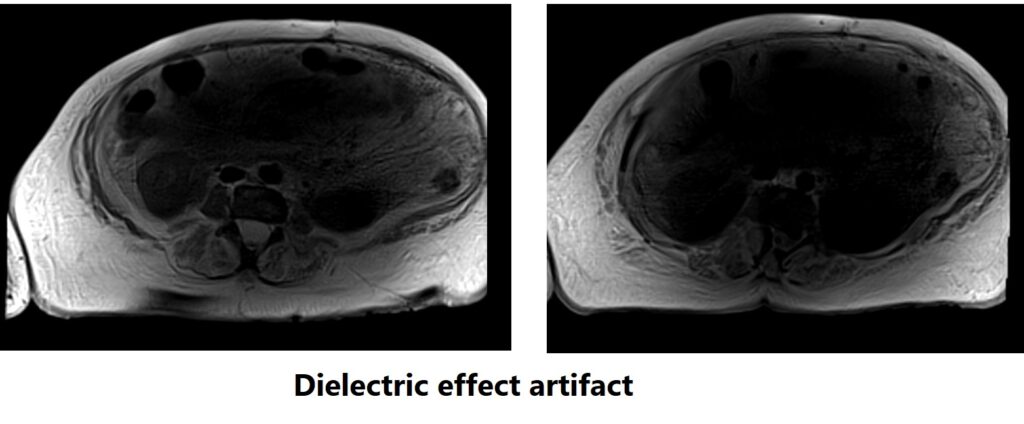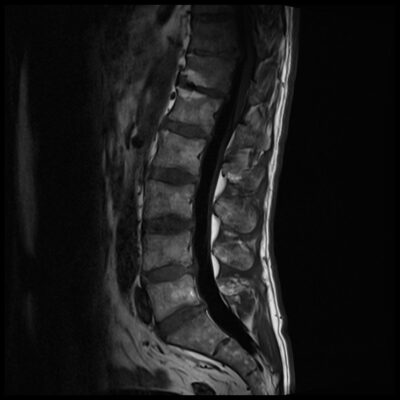Dielectric Effect Artifact
The dielectric effect artifact is a common artifact that can occur in magnetic resonance imaging (MRI) when imaging regions of the body that contain materials with high dielectric constants. This artifact arises due to the interaction between the radiofrequency (RF) electromagnetic field and the high dielectric constant materials, such as ascitic fluid within the body.
During an MRI scan, the RF field is used to excite the protons in the body, which then emit signals that are detected by the MRI receiver coils to create an image. However, when the RF field encounters a material with a high dielectric constant, it can cause significant distortions in the magnetic field and affect the accuracy of the image.
The dielectric effect artifact manifests as signal voids or distortions in the MRI image. In areas where the artifact occurs, the signal intensity can be drastically reduced or completely absent. This can lead to a loss of anatomical detail or the appearance of dark regions in the image.
This artifact is more commonly observed in high-field MRI systems, such as 3T, compared to lower field strengths.

Here are some strategies to minimize or avoid Dielectric Effect Artifact
Dielectric pad: The use of a specially designed pad, known as a radiofrequency cushion or dielectric pad, between the patient and the receiver coil can help reduce the impact of the dielectric effect artifact in MRI. However, it’s important to note that while this approach can minimize the artifact, it may not completely eliminate it.
Use low magnetic field strength: Scanning using low magnetic field strength in an MRI scanner can help reduce the dielectric effect artifact to some extent.
Optimize imaging parameters: Adjust the imaging parameters, such as echo time (TE) and repetition time (TR), to minimize susceptibility artifacts. Shorter TE and longer TR can help reduce the impact of the artifact.
Dielectric effect artifact image gallery




References:
- Polders, D. L., Leemans, A., Hendrikse, J., & Luijten, P. R. (2011). The effect of the dielectric interface on MRI: study of the human head. Magnetic resonance in medicine, 66(2), 467-472.
- Tkaczyk, J. E., & Lee, J. H. (2015). Magnetic resonance imaging at 3T: effects of the radiofrequency environment on image quality. Clinical imaging, 39(2), 265-271.


